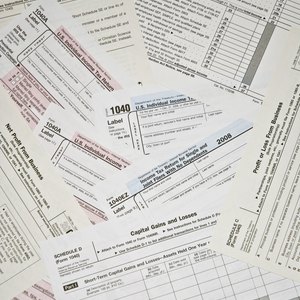
Everyone has to pay Social Security and Medicare taxes. You'll pay half the taxes and your employer will pay the other half if you work for someone else. Self-employed business owners aren't so fortunate.
They don't have an employer to contribute half the taxes, so self-employed persons must pay the full amount themselves. The amount is determined by calculations on Schedule SE and reported to the IRS.
You must file tax forms for a Schedule SE and a Schedule C together with a Form 1040 if you're self-employed. You'll submit the forms with your annual tax return when you file it with the IRS. Here's what you need to know.
How Much are Social Security and Medicare Taxes?
Social Security taxes for self-employed persons are 12.4 percent of net earnings as of the 2022 tax year. Medicare taxes add another 2.9 percent, for a total of 15.3 percent.
The maximum income subject to Social Security taxes is $147,000 in 2022, increasing from $142,800 in 2021. You won't pay Social Security taxes for the remainder of the year if you earn $147,001 in September, but you'll have to resume payments again in January. The maximum amount you could pay in Social Security taxes in 2022 is therefore $18,228: $147,000 at the rate of 12.4 percent.
Medicare taxes don't have a wage base limit. And earners with incomes above $200,000 for a single filer or $250,000 for joint filers are subject to a 0.9 percent Additional Medicare tax as well.
Schedule SE is used to calculate your self-employment taxes for Social Security and Medicare.
Read More: What Is the FICA-HI Tax?
Who Must File a Schedule SE?
Any self-employed taxpayer who earns more than $400 in net profit from their business must file a Schedule SE. Self-employed business owners are:
- Sole proprietors and single-member limited liability companies whose owners file a Schedule C with their tax returns
- S Corporation owners who file K-1s for their income portion of an S Corp.
- Partners in multi-member LLCs and partnerships who file K-1s with their tax returns for their share of partnership income.
Freelancers are considered to be sole proprietors.
You can combine the net earnings from all these businesses on one Schedule SE to calculate your self-employment income if you have two or more businesses. A loss in one business will reduce the income from another and reduce the amount of tax you must pay.
Read More: Tax Document Checklist for Freelancers
How to Complete a Schedule SE
Start with your Schedule C to calculate the profits from your independent business. Schedule C will show your income and all your business-related tax deductions, which are subtracted from your income to arrive at how much money you'll be taxed on. The profit from this schedule will be entered on the 2021 Schedule SE that you'll file in 2022. It appears on line 31 of the 2021 Schedule C.
Enter the business profit you calculated on Schedule C on line 2 of Schedule SE. Multiply this profit figure by 92.35 percent and enter the result on line 4a. Multiply Line 4a by 12.4 percent to get your Social Security tax.
Multiply Line 4a by 2.9 percent to get your Medicare tax if you don't have other church income and are not using the optional methods to calculate your self-employment tax.
Add both figures together to find your total self-employment tax and enter this on Line 4 of the 2021 Schedule 2, Additional Taxes. This, too, must be filed with your tax return.
Take one-half of your total self-employment tax and enter this amount on line 15 as an Adjustment to Income on the 2021 Schedule 1, which you'll also file with your tax return. This amount subtracts from your taxable income, so you at least get some credit for paying the employer’s share of your self-employment tax.
How to Pay Estimated Taxes
The IRS indicates that self-employed taxpayers should make quarterly estimated payments if they expect to owe more than $1,000 in taxes for the year on their self-employment earnings. You should make quarterly estimated payments for both your business income tax and your self-employment taxes to avoid late payment penalties.
References
- Internal Revenue Service: Instructions for Schedule SE
- Internal Revenue Service: 2021 Schedule SE
- Internal Revenue Service: Form 1040-ES Estimated Tax for Individuals
- Internal Revenue Service: 2021 Schedule 1 Additional Income and Adjustments to Income
- Internal Revenue Service: 2021 Schedule 2 Additional Taxes
- Social Security Administration: Contribution and Benefit Base
- Internal Revenue Service: Questions and Answers for the Additional Medicare Tax
- Internal Revenue Service: 2021 Schedule C Profit or Loss From Business
Writer Bio
James Woodruff has been a management consultant to more than 1,000 small businesses. As a senior management consultant and owner, he used his technical expertise to conduct an analysis of a company's operational, financial and business management issues. James has been writing business and finance related topics for work.chron, bizfluent.com, smallbusiness.chron.com and e-commerce websites since 2007. He graduated from Georgia Tech with a Bachelor of Mechanical Engineering and received an MBA from Columbia University.

